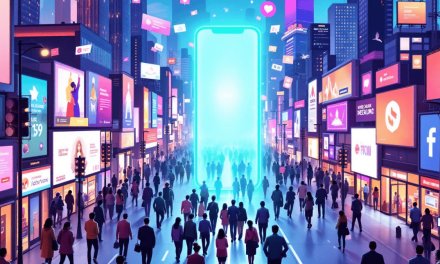Marketers in Asia Pacific have long optimized budgets around social, search and video. But messaging remains under-utilised as a brand engagement channel.
Consumers in the region are spending a huge chunk of their digital lives on messaging apps — far more than many brands acknowledge.
A recent report found that Asia Pacific is the fastest-growing region for conversational messaging, with a 51% surge in 2024. In particular, the retail and e-commerce sector saw a 169% surge in interactions on conversational messaging platforms.
Despite this momentum, messaging remains under-utilised by marketers in the region. Why is that so, and are things going to change? We find out from Cristina Constandache, Chief Revenue Officer, Rakuten Viber, which has nearly 900 million registered users globally, and strong usage in countries like the Philippines, Myanmar, and Cambodia.
What trends or patterns have you noticed in how marketers use messaging platforms, especially here in this region?
Constandache: Conversation is very important. Businesses have always been communicating with their users, but mainly on their own channels.
What we’re seeing for the past 10 years, but especially since the pandemic, is that users focus their time and attention on fewer and fewer apps. To reach them, you can’t ask or expect them to download your own app as an enterprise; you need to meet them where they spend most of their time.
Irrespective of which messaging app they are using, the reality is that they spend more than 50% of their time in messaging and social media. More importantly, messaging has almost become the new browsing experience, to the detriment of some traditional search engines.
Consumers are looking to interact with businesses in messaging. They want to do so in a more native and natural way than just wasting their time looking for contact details online, calling call centers, waiting in a queue, submitting a ticket, sending an email, waiting for a reply, or checking their email that goes to spam.
They want to be able to do it in a real-life environment, similar to a face-to-face environment but on their own terms. They expect businesses to be open 24/7. They expect to be able to approach businesses at all times — anytime, any day of the week.
They expect instant responses, like they would from friends and family they are messaging with.
When you say “natural”, what is the expectation from the consumer? There are businesses who still use AI, chatbot responses, and things like that.
Constandache: What I mean by “natural” is they were expecting to receive information in a natural language, or rather, similar to a human interaction.
Before AI, this was not really the case, in the sense that while bots were providing answers, they were providing the same answer they would pull from an FAQ, or they were providing answers in a language that was clearly not personal, very artificial, and very business-focused.
Now, with the emergence of AI, we’re seeing that finally, while the source of information remains the same — terms and conditions, etc. — the feeling is that of a conversation with a human, which clearly motivates consumers to continue these exchanges and to proactively reach out rather than just being messaged by a business.
On that note, you also said that they expect businesses to be open 24/7, and also the fact that businesses are using AI technology. How do you see that trend evolving? It seems like both sides have to adapt to this new way of communicating.
Constandache: Up until now, there was a demand from consumers for a two-way conversation, but businesses very much remained in a one-way logic where they would send notifications to consumers, even if they did it in messaging apps. They would control the conversation.4
More recently, at least in the markets where we are seeing businesses interacting with consumers on Viber, the automated responses are finally coming when the inquiries from the consumers are coming, because of AI.
We had a lot of cases in the past where consumers were replying to business messages, trying to engage with the business, but there would be no response. Not because the technology didn’t allow it, but because the business didn’t allow it to happen and they didn’t plan for it.
So how is Viber helping both consumers and businesses in this respect?
Constandache: We launched business messages about 10 years ago. Since then, businesses have been able to send notification messages in Viber, and in case the notification is not sent, there is a fallback to SMS, so users always receive a notification.
Over the last decade, we have added a lot more features to these messages. Originally, they were only promotional. We then spent a lot of time educating businesses to find the right balance between promotional and what we call transactional. These are notifications about orders, deliveries, credit card statements, and documents that can be sent as attachments to these messages.
We were really pushing the non-promotional angle. After that, as a natural evolution, we opened our APIs and enabled businesses to launch chatbots in Viber, so that they can continue their two-way conversations with users.
Consumers had a very big appetite for it, but businesses were initially very resistant because of how traditionally big businesses are set up and the fact that CRM remains split between different departments. The bigger the organization, the more fragmented the user experience is.
With COVID, we saw a lot of micro-businesses using personal messaging tools for business purposes. All of a sudden, from one day to the next, businesses were closed. For example, in the Philippines, many family-owned and small businesses had to communicate with their consumers, especially in the food industry. These businesses started using group chats to create group messaging with their clients, and this was very widespread. After the pandemic finished, we expected these chats to end because businesses opened physically again. But they continued.


















